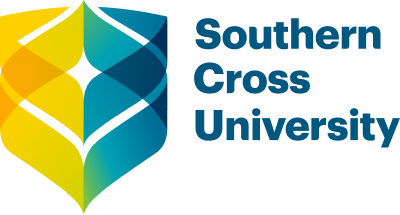View all news
A high-tech solution to recording and protecting ancient wisdom
Categories
Share
Giving Indigenous communities a greater say on how their traditional lands are managed and preserving the wisdom of Elders is the focus of a new project being launched at Southern Cross University.
The Bundjalung Mapping Project will be launched at the University’s Gnibi College of Indigenous Australian Peoples tomorrow.
It is a joint venture between the University, the Bundjalung Nation Aboriginal Cultural Heritage and Natural Resource Management Committee, Northern Rivers Catchment Management Authority, and Department of Environment and Conservation National Parks and Wildlife Division.
The project has seen the creation of a highly secured, user-friendly computer-based record keeping system through which communities can record and own their cultural knowledge.
It is designed to be administered and controlled by Indigenous communities, with important or significant information only able to be accessed by those persons delegated by the local Aboriginal community.
Communities can record oral, visual and written histories, photographs, films and any other kind of digital media about their cultural places and landscapes and file them on the database for the benefit of future generations.
“A few years ago I became extremely concerned that Indigenous cultural knowledge and traditions were not being recorded or passed on to the younger generation,” said Dr David Lloyd, senior lecturer in the School of Environmental Science and Management and cultural mapping project manager.
“It seemed this would be lost within a very short time if some real effort was not made to preserve it.
“After consultation with Indigenous communities they decided to work cooperatively with us and use modern technology to record their ancient wisdom, heritage and cultural traditions.
“The first community we have worked closely with are the Aboriginal people of the Tweed-Byron region and we are now encouraging other communities to get involved.
“This project is aimed at giving value to the knowledge of Indigenous Elders and giving youth pride in their cultural history and pride in their community.
“The project delivers the equivalent of a filing cabinet, with folders and an index system, but only Indigenous communities and delegated persons have the key to open it.
“Files which contain information of a highly spiritual nature will only ever be accessed by nominated Elders who can choose to pass on their access codes when the time comes.
“Importantly, the project will allow Indigenous communities to access information on the National Parks and Wildlife Service sites database and to list significant sites on this register for protection under the law.
“Once a site is registered it alerts government agencies and local councils of the need to consult with local communities before undertaking activities that may threaten the integrity of the site.
“This community driven database will also be a most useful building block in the development of Aboriginal cultural heritage management plans with local government for the preservation and protection of Aboriginal significant sites and places.”
Photo opportunity tomorrow, December 14: Launch of the Bundjalung Mapping Project, 11am to 12.45pm at Gnibi College of Indigenous Australian Peoples, Southern Cross University, Lismore campus. Project overview and demonstration 11.25am; official launch, 12.30pm.
The Bundjalung Mapping Project will be launched at the University’s Gnibi College of Indigenous Australian Peoples tomorrow.
It is a joint venture between the University, the Bundjalung Nation Aboriginal Cultural Heritage and Natural Resource Management Committee, Northern Rivers Catchment Management Authority, and Department of Environment and Conservation National Parks and Wildlife Division.
The project has seen the creation of a highly secured, user-friendly computer-based record keeping system through which communities can record and own their cultural knowledge.
It is designed to be administered and controlled by Indigenous communities, with important or significant information only able to be accessed by those persons delegated by the local Aboriginal community.
Communities can record oral, visual and written histories, photographs, films and any other kind of digital media about their cultural places and landscapes and file them on the database for the benefit of future generations.
“A few years ago I became extremely concerned that Indigenous cultural knowledge and traditions were not being recorded or passed on to the younger generation,” said Dr David Lloyd, senior lecturer in the School of Environmental Science and Management and cultural mapping project manager.
“It seemed this would be lost within a very short time if some real effort was not made to preserve it.
“After consultation with Indigenous communities they decided to work cooperatively with us and use modern technology to record their ancient wisdom, heritage and cultural traditions.
“The first community we have worked closely with are the Aboriginal people of the Tweed-Byron region and we are now encouraging other communities to get involved.
“This project is aimed at giving value to the knowledge of Indigenous Elders and giving youth pride in their cultural history and pride in their community.
“The project delivers the equivalent of a filing cabinet, with folders and an index system, but only Indigenous communities and delegated persons have the key to open it.
“Files which contain information of a highly spiritual nature will only ever be accessed by nominated Elders who can choose to pass on their access codes when the time comes.
“Importantly, the project will allow Indigenous communities to access information on the National Parks and Wildlife Service sites database and to list significant sites on this register for protection under the law.
“Once a site is registered it alerts government agencies and local councils of the need to consult with local communities before undertaking activities that may threaten the integrity of the site.
“This community driven database will also be a most useful building block in the development of Aboriginal cultural heritage management plans with local government for the preservation and protection of Aboriginal significant sites and places.”
Photo opportunity tomorrow, December 14: Launch of the Bundjalung Mapping Project, 11am to 12.45pm at Gnibi College of Indigenous Australian Peoples, Southern Cross University, Lismore campus. Project overview and demonstration 11.25am; official launch, 12.30pm.

/prod01/channel_8/media/scu-dep/current-students/images/Coffs-harbour_student-group_20220616_33-147kb.jpg)
/prod01/channel_8/media/scu-dep/current-students/services/counselling/images/RS21533_English-College-Student_20191210_DSC_6961-117kb.jpg)
/prod01/channel_8/media/scu-dep/study/scholarships/images/STEPHANIE-PORTO-108-2-169kb.jpg)
/prod01/channel_8/media/scu-dep/study/arts-and-humanities/images/RS20958_Chin-Yung-Pang-Andy_20190309__79I5562-960X540.jpg)
/prod01/channel_8/media/scu-dep/experience/images/SCU-INTNL-STUDY-GUIDE-280422-256-72kb.jpg)
/prod01/channel_8/media/dep-site-assets/component-library/screenshots/online-1X1.jpg)